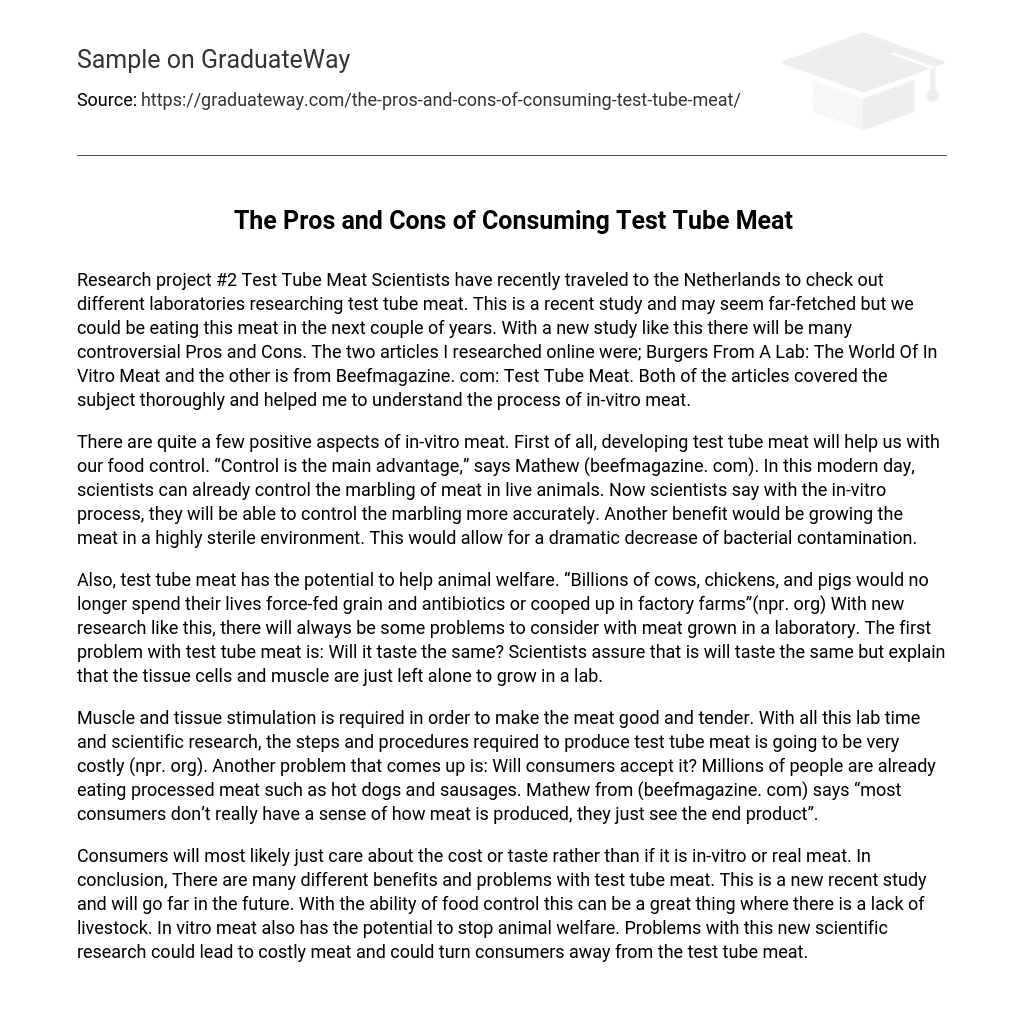Recent research in the Netherlands has explored laboratories dedicated to developing test tube meat. This novel concept could potentially become a common component of our diets in the upcoming years. Controversial viewpoints are expected with any groundbreaking study. To grasp the process of in-vitro meat, I referred to two comprehensive articles: “Burgers From A Lab: The World Of In Vitro Meat” and “Test Tube Meat” from Beefmagazine.com.
In-vitro meat has several positive aspects. It can help with food control by allowing for better control over the marbling of meat. According to Mathew from beefmagazine.com, control is the main advantage. In addition, the in-vitro process enables growing meat in a highly sterile environment, which can dramatically reduce bacterial contamination.
Test tube meat has the potential to improve animal welfare. NPR.org states that if this technology becomes widespread, billions of cows, chickens, and pigs would no longer have to endure force-feeding of grain and antibiotics or live in cramped factory farms. However, there are several concerns associated with lab-grown meat. One primary concern is whether it will have the same taste as conventional meat. Scientists claim that it will taste identical, as the tissue cells and muscles are allowed to grow naturally in the laboratory setting.
The process of producing test tube meat requires muscle and tissue stimulation to achieve desired tenderness. However, extensive lab time and scientific research make this production method costly (npr. org). Additionally, consumer acceptance poses a significant challenge. Many individuals already consume processed meat like hot dogs and sausages, without fully understanding the production process (beefmagazine. com, Mathew).
Regardless of whether it is produced in-vitro or from real animals, consumers are primarily concerned with the cost and taste of meat. The field of study associated with test tube meat holds great potential for the future, despite its numerous benefits and challenges. In regions where livestock is scarce, controlling food production through in vitro meat could be advantageous. Moreover, this scientific advancement could address animal welfare issues. However, there are concerns that the high cost associated with this research could discourage consumers from embracing test tube meat as a viable option.





